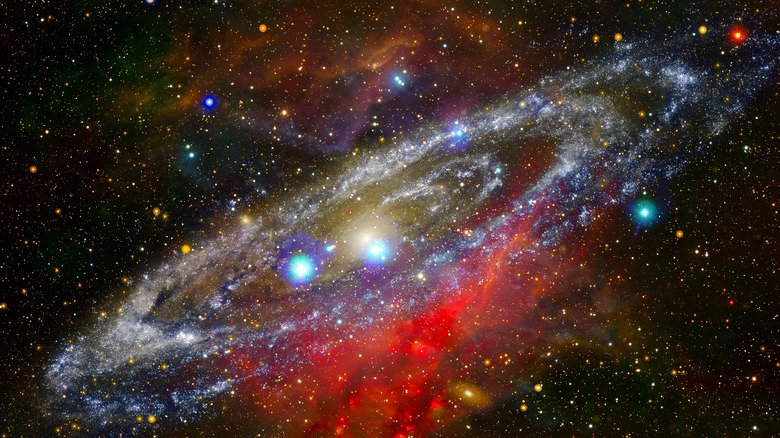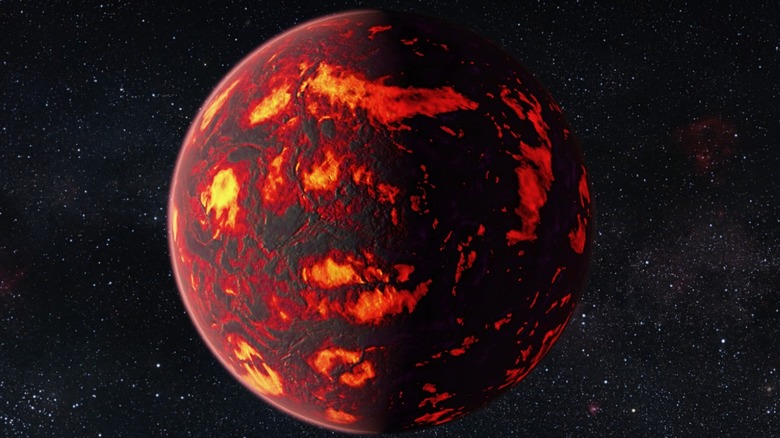Everything We Know About The Planet Made Of Diamonds
The universe is a strange place where unexpected things happen, but when stripped deep down to the basics, its fundamental laws are as simple as the ones found on Earth. Hydrogen, helium, oxygen, and carbon are the most abundant cosmic elements. When the right conditions come along, these universal building blocks can transform into valuable and magnificent substances.
On Earth, diamonds form when carbon deep underground is subjected to high pressures for long periods of time, as NASA explains. Diamonds on Earth are rare because the elements and conditions needed for them to form are scarce. However, in the violent environment of space, extreme pressure and temperatures are very common. Science is rapidly revealing that our solar system, and the entire universe, are immensely wealthy. An asteroid can be worth billions of dollars or more, helium has a massive energy potential (via ESA), and water spread throughout the cosmos could expand human civilization beyond our planet.
Scientific space resource discoveries have been driving space mining. A space policy introduced under U.S. President Barack Obama resulted in the Public Law 114-90 of November 25, 2015, which is called the U.S. Commerical Space Launch Competitiveness Act, also known as the Space Act. This law officially opened up space resources extraction operations to the private sector with the full support of the federal government — and in this search for space resources, nothing speaks business like planets made of diamonds.
55 Cancri e isn't the only planet full of diamonds
In 2012, Yale University scientists published a study announcing the identification of a planet rich in diamonds. Called 55 Cancri e, the planet is "possibly covered in diamond, rather than water and granite," scientists explained at the time. The exoplanet is twice the size of Earth but has eight times its mass. This super-earth, 40 light-years away from us, is locked in a hyper-speed tidal orbit to its star. The planet is 25 times closer to its sun than Mercury is to our sun. Temperatures there reach 9200 degrees Fahrenheit, according to NASA's Goddard Space Flight Center. 55 Cancri e has, in the broadest sense, an estimated value of about $26.9 nonillion, which looks something like this: $26,900,000,000,000,000,000,000,000,000,000.
A 2020 scientific report published by the American Astronomical Society claims to have cracked the science behind diamond planets. Researchers led by scientists at the Arizona State University explain that diamond planets are bound by certain types of stars that have high carbon-to-oxygen ratios, where carbides dominate over silicates.
Scientists simulated the extreme pressure and temperature conditions of these planets and studied how silicon carbide behaves in these environments. They discovered that at pressures above 50GPA and with temperatures up to 2500 degrees Kelvin, carbide silicon converts to silica and diamond. Other planets and moons that have been marked as potential diamond hotspots include Pluto's largest moon, Charon, and a Jupiter style exoplanet rich in carbon found 1,200 light-years from Earth called WASP-12b. Even closer to home, scientists theorize that diamonds rain on Saturn and Jupiter regularly.

